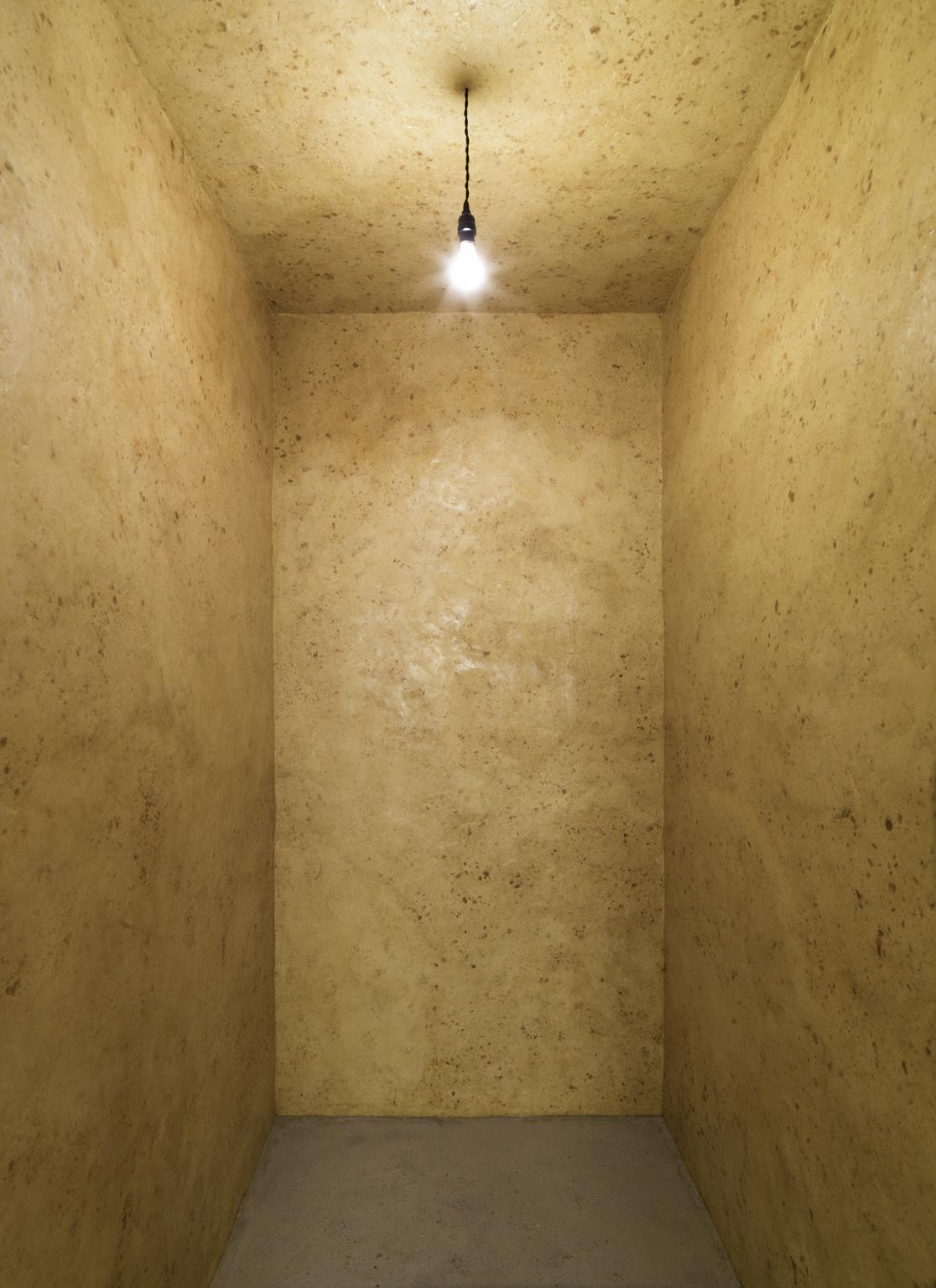Wax Room: Wohin bist Du gegangen – wohin gehst Du? (Where have you gone – where are you going?)
Wolfgang Laib ( 2013 )

Born in Metzingen, Germany, in 1950, the son of a physician, Wolfgang Laib initially followed his father’s path. In 1972, upon returning to Germany after a three-month stay in India, where he had been studying the quality of the local drinking water for his medical dissertation, Laib discovered a large black rock, about three feet long, in a field near his house. Inspired by his memories of the simple shapes of quotidian and ceremonial objects in India, he brought the rock home and, although he had never formally studied art, set to work carving it into a perfect ovoid object called a brahmanda (in India, a stone brahmanda symbolizes the unity of male and female principles and the wholeness of the universe). As he worked, Laib realized that he had become dissatisfied with medical science, which he felt addressed human needs imperfectly. He decided to become an artist instead of a physician.
Since then, Laib has created objects of great simplicity and purity: “milkstones”—rectangular slabs of polished white marble with barely perceptible depressions on their upper surfaces that he fills with milk; fields of yellow or orange pollen that he sifts onto the floors of galleries or museums; and rooms lined with beeswax. Identifying with no artistic school or movement, Laib has distanced himself from Western European aesthetic traditions. Specifically, he rejects the notion of the autonomous creative ego that emerged in the Renaissance, which has led, he believes, to the prevalent, uniquely Western concept of the artistic self. He has little interest in contemporary art apart from his own practice, and has forged few friendships with other artists, remaining true for more than thirty years to his solitary pursuit. He is inspired equally by the natural environment of his native southern Germany, where he lives in a small village outside Biberach, and by non-Western art and religion, especially those of his second home near Madurai, in Tamil Nadu, India.
In 2013, Laib installed Where have you gone – where are you going?, the first permanent site-specific installation initiated at The Phillips Collection since the Rothko Room in 1960. Laib’s life-sized wax rooms, built out of beeswax blocks or shaped from melted beeswax and “activated” by the dim light of a bare bulb suspended from the ceiling, are considered among his signature works. These small, echoing, and cocoonlike chambers offer a personal, meditative experience that is immediate and intense, with the comforting scent of beeswax.
For Laib, The Phillips Collection was a logical choice for his first permanent wax room in a museum because of the Phillips’s intimate and experiential character. While at the Phillips to participate in the Conversations with Artists series in October 2012, Laib visited the Rothko Room for the first time; it left a profound impression. “A wax chamber has a very deep and open relationship to Rothko’s paintings,” he explains, because to enter a wax room is to be “in another world, maybe on another planet and in another body.” [1] Laib’s wax rooms are directed inward, forcing the viewer into a mental suspension of everyday reality. The intense smell and color of these rooms seem to induce a loss of awareness of self or place. For Laib, art is an act of participation and of sharing—participating in nature and sharing that experience with others. His works are not merely visual experiences but serve as contributions to social and spiritual change.
1. https://www.phillipscollection.org/collection/laibwax-room.
Text by Klaus Ottmann, adapted from Seeing Differently: The Phillips Collects for a New Century (The Phillips Collection in association with Giles, 2021)